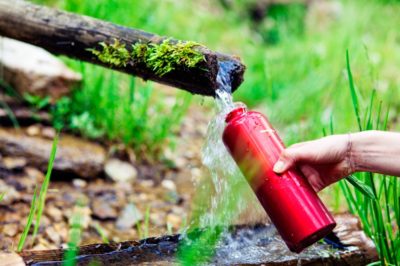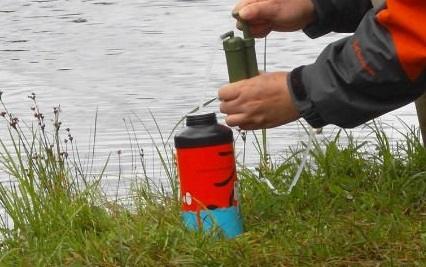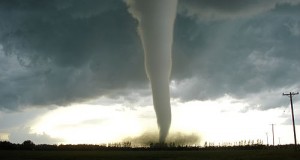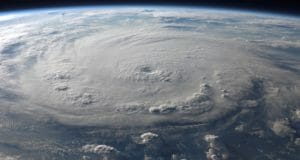 There you are, high up in the mountains, wide open sky, a few scattered clouds, squirrels playing in the tree and the sound of a babbling brook in your ears. Just the thought of it is enough to make you want to pack up and disappear. The sight of that stream cascading down through the rocks and trees is enough to make anyone thirsty. Oh for a fresh cup of mountain cold water.
There you are, high up in the mountains, wide open sky, a few scattered clouds, squirrels playing in the tree and the sound of a babbling brook in your ears. Just the thought of it is enough to make you want to pack up and disappear. The sight of that stream cascading down through the rocks and trees is enough to make anyone thirsty. Oh for a fresh cup of mountain cold water.
But wait! How do you know that water is safe to drink? Whereas a few short years ago you could drink that water with reasonable certainty that you wouldn’t get sick, today you can’t be quite so sure. As crazy as it may seem in such a pristine environment, high up in the mountains, the water cascading down that stream could be dangerous to drink.
The problem is that you never really know if the water is safe or not and finding out could be rather expensive. There’s really no way that you can know what’s upstream. Has an animal died in the water, contaminating it? Was another camper using it for their personal latrine? What minerals does that water contain? Could it be poisoned by something like arsenic and you not even know? There are so many possibilities that as much as we all might want to taste that cool, clear water, we’re better off not tasting it; or at least, not tasting it without making sure it’s safe to drink.
Ultra Efficient Water Filter Fits In Your Pocket!
I remember backpacking in the Colorado Rockies in my younger years. Back then it was fairly common to drink the water in the mountains, without worrying about it. But I also remember hearing how those same streams aren’t all that clean anymore. Today, smart hikers and backpackers carry the means to make sure that their water is pure. Water, after all, is heavy, and water purification is essential when going on long hikes.
So what has happened to those streams? Actually, a number of different things. In some cases, it was simple pollution, while in others it was just the natural erosion causing mineral deposits to be exposed, which are putting dangerous levels of minerals into the water. In still others, campers have contaminated it, without even realizing what they were doing.
Story continues below video
There are two basic things you have to be concerned about with any water you find: microscopic pathogens and chemicals. When I say “chemicals,” I’m not necessarily talking about industrial chemicals, because some of these chemicals are found in nature. Minerals can chemically contaminate water very easily. The word “pathogens” covers anything biological, like bacteria, protozoa and viruses.
Between pathogens and chemicals, pathogens are usually the bigger problem that we need to concern ourselves with.

Paratrooper’s Water Filter
Pathogens get into the water supply by people bathing, using the water for a latrine or by animals dying in the water. They can be very dangerous, causing severe sickness and even death. Even a “simple” health problem, like diarrhea, can kill you if you don’t drink enough water to keep from dehydrating. Taking care of yourself in the wild is difficult enough, without having to deal with sickness. Any sickness can be enough to cause some very grave consequences.
But it’s really not all that hard to make sure that you have clean water to drink, even in the wilderness. Many backpackers carry a small filter like the “Paratrooper’s Water Filter,” which takes up virtually no room in your backpack, and it can provide you with many gallons of fresh, cool mountain water that’s safe to drink. Unlike some filters, with this device you actually can see the water before you drink it.
The advantage of filtering over other forms of water purifying is that you keep the water cool and refreshing and don’t change its flavor. Other means of water purification in the wild either require making the water hot or adding chemicals that destroy the flavor of the water. Of course, that’s better than drinking water that will make you sick, but it takes a lot of the pleasure out of drinking from that mountain stream.
Chemical purifiers always end up changing the flavor of water that they are added to, usually in a negative way. While good for an emergency, they really shouldn’t be used any other time. The other common means of water purification is boiling. While that is effective, it takes time out from your other activities. Besides, who wants to drink hot stream water?
Boiling water kills pathogens because they uniformly die at 158oF. So, in reality, you don’t have to bring the water all the way up to the boiling point in order to purify it. Water boils at 212oF at sea level and at a lower temperature at higher altitudes. At 12,000 feet above sea level, water boils at 189.7oF, still much higher than is necessary to purify water.
Bringing water up to 158oF to kill the bacteria and purify it is called pasteurization. This method was developed in the 1800s by a French chemist and microbiologist named Louis Pasteur. The milk you buy in the grocery store has been pasteurized.
There is a small, inexpensive device which you can buy, which has been developed to allow people in third world countries to pasteurize water as a means of purifying it. This device, called a “Water Pasteurization Indicator” or more commonly called a WAPI, consists of a plastic capsule with a wax pellet in it. The container for the WAPI can be used as a float for it, by inserting the WAPI into a hole in the bottom of the container.
The WAPI is floated in the water that is being heated up. When it reaches a hot enough temperature to pasteurize it (158oF), the wax pellet melts and drops to the bottom of the capsule, providing a visual indicator that the water is now safe to drink. Once cooled, the WAPI can be used again.
Regardless of the methodology you decide to use, always make sure that you have some means of water purification with you. None of us ever know when we will be faced with a disaster or out in the wilderness without a clean supply of water. Carrying some means of water purification can make a huge difference in our health and in our chances of survival.
Sign up for Off The Grid News’ weekly email and stay informed about the issues important to you
 Off The Grid News Better Ideas For Off The Grid Living
Off The Grid News Better Ideas For Off The Grid Living




